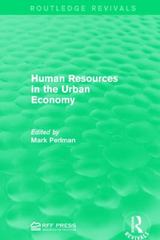Consider the following regression: log Earnings; = B1 + B25, + BalQ: + BAEXP; + u; where . Earnings is the income they went on to earn after completing school . S is the individual's years of schooling . IQ is their intelligence . EXP is the individual's work experience We should expect that 82 > 0 since people with more schooling tend to earn higher wages. However, there is an obvious concern with endogeneity here; namely, people may choose to get more schooling in anticipation of higher earnings, and thus Earnings also causes S. Thus, we will need a instrument to use two staged least squares to obtain a consistent estimate of 82. (a) (6pts) Consider the following instruments for schooling S in the earnings regression. For each, argue whether or not you think it is relevant and exogenous. (i) IQ, the individual's intelligence (ii) The individual's proximity to a university growing up (iii) The individual's height (b) (7pts) You decide to use the variable Quarter Birth;, the quarter of an individual's birth, as an instrument for schooling, following Angrist and Krueger (1992). Your logic is that those born earlier in the school year (Fall) can turn 16 years old and drop out of highschool almost a whole year sooner than those born later (Spring). However, there is no systematic relationship between being born at a particular time in the year and having higher earnings. Based on the following regressions, do you believe that Quarter Birth is a valid instrument? (i.e., is it relevant and exogenous)? Si = 1 + 72QuarterBirth; + e; Parameter Estimate Std. Err. 12.2 0.04 72 0.06 0.001 N = 500 log Earnings; = 81 + B25, + BalQ. + BAEXP, + BsQuarter Birth; + u;The following is a. model you've estimated Medals. = 31 + ,dgGDPpcg + 33mg. + 545mm + swarm where for country i, e M edalsi is the total number of Olympic medals won since the games began I GDPpcl- is the GDP per capits 0 Big is a dummy variable equal to 1 if i is in the top third of countries in terms of population and 0 otherwise 0 Smolii is a dummy variable equal to 1 if 1? is in the bottom third of countries in terms of population and 0 otherwise o North..- is a dummy variable equal to 1 if the majority of country i lies north of the equator and 0 otherwise You estimate that (a) (Ipts) What is the reference category for this regression? (b) (4pts) What is the difference in the expected number of medals between two countries that are: Parameter Estimate Std. Err. 16 2.46 0.003 0.15 36 2.5 -20 4.52 5 6.18 o A northern country in the bottom third of countries in terms of population and 30,000 in GDP per capita o A southern country with 8 GDP per capits of 15,900 and a population in the middle third of all countries (c) (10pts) Suppose you replace Smlli with M 9:11;. a dummy variable equal to 1 if country 1' is the middle third of countries in terms of population and 0 otherwise. Then: Means.- ==n + "i'gGDPpce + 'mBigg + 'nMed; + emcee; Find 'nz. is. it. and '(5








